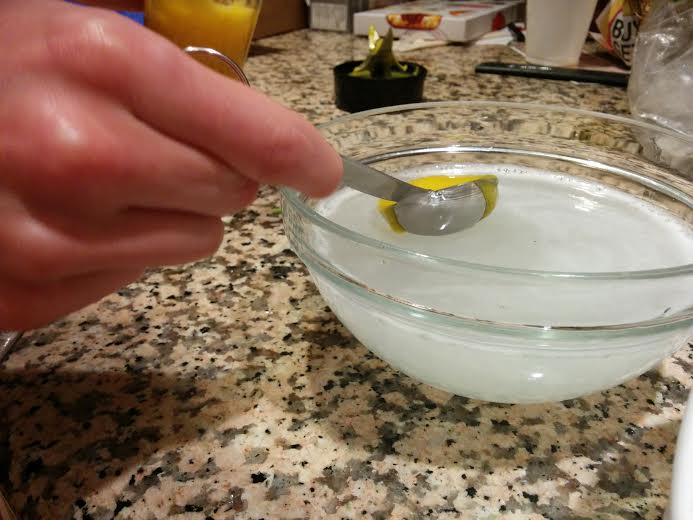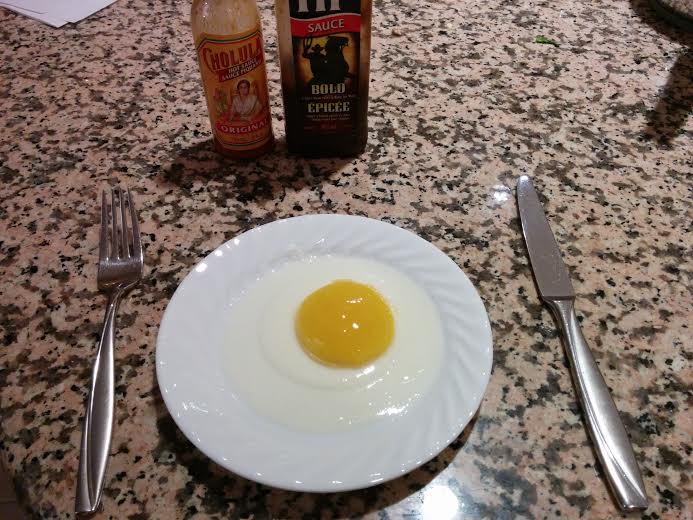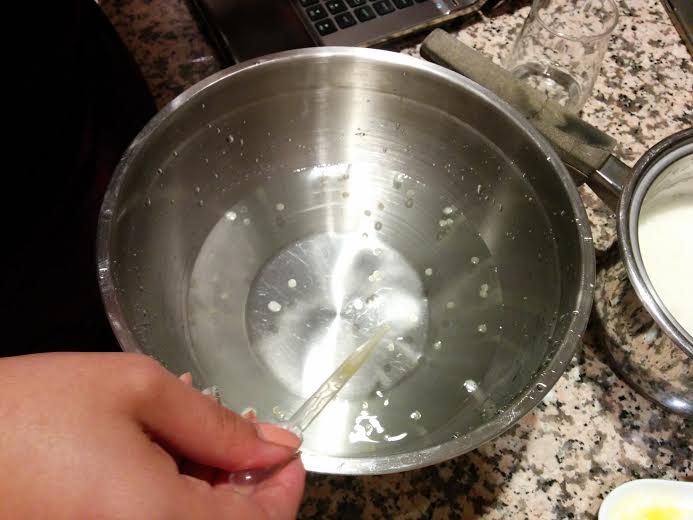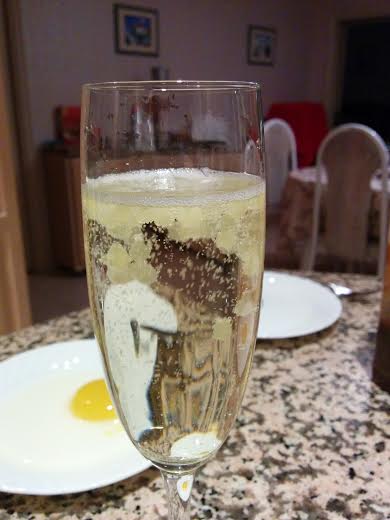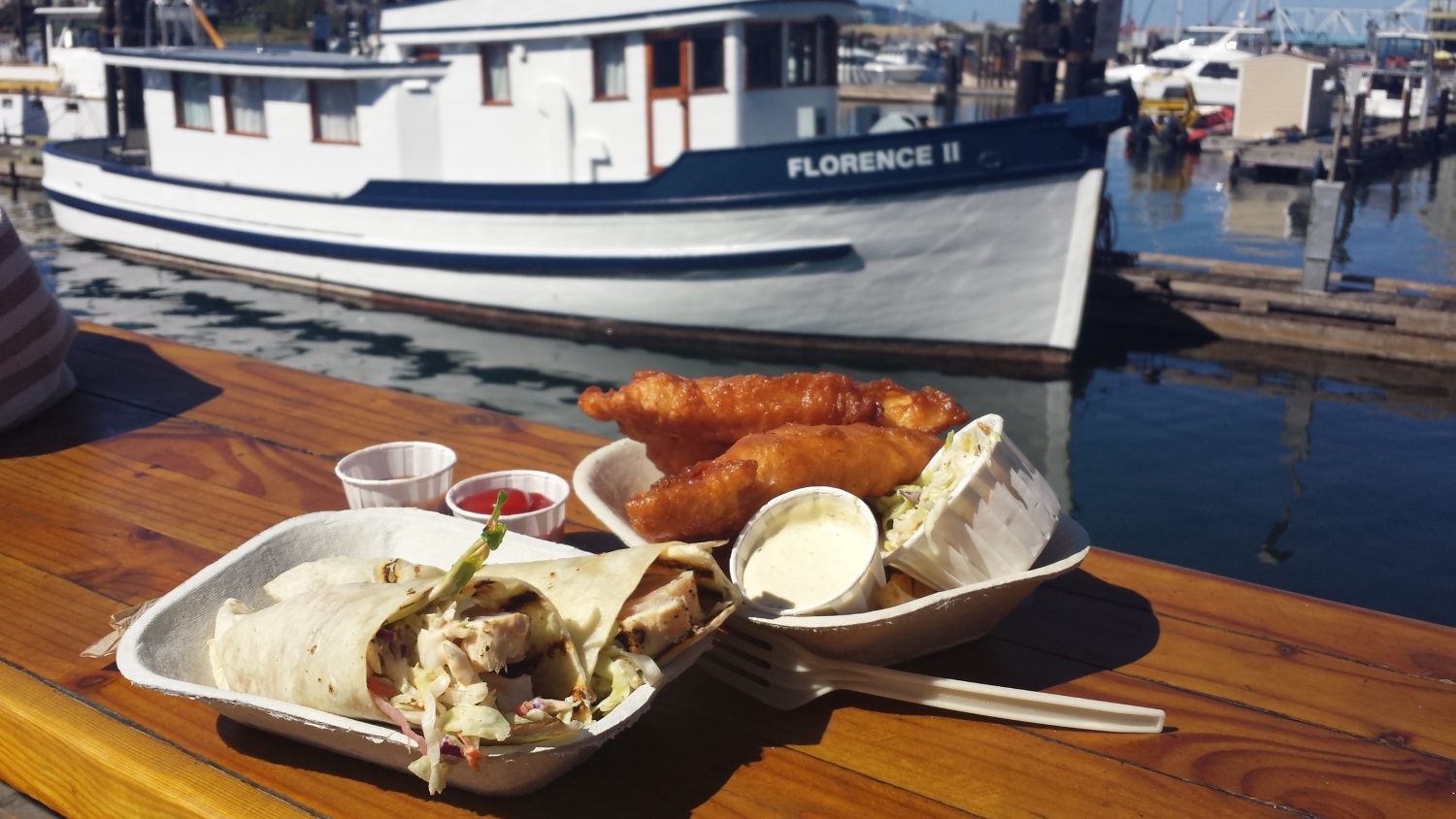It’s 10pm and you can’t sleep, so what’s a foodie to do? For FancyFrite Janine and I, it’s time to get our science on and play around with her molecular gastronomy kit from Molecule-r.
The kit includes sachets of all the chemical ingredients you need, plus equipment to carry out all the demonstrated recipes that are shown on the how-to dvd, also included. Janine had seen an “egg” demonstrated on the dvd, so we decided to use that as our starting point. From there we thought we’d continue with a breakfast theme, and make a play on bellinis/champagne and caviar.
The Egg
We started with the “Egg”, which began with an egg white base of milk, plain yogurt, sugar, coconut extract, and one sachet of agar-agar . We poured a first layer on, left it in the fridge to set, and then poured a second layer on and again put it in the fridge to set. The two layers were meant to look like a real egg fried sunny side up. Next, the yolk. We began by pureeing ripe mango with sugar and 1/2 tsp calcium lactate. We then created a bath using 2 cups of water and a sachet of sodium alginate. After combining the two ingredients for the bath we blended it thoroughly with an immersion blender.
Once the bath and puree were ready, it was time to create our yolks. We dropped the puree into the bath by the tablespoonful carefully.
Once we had given the “yolks” time to set and develop a skin, we transferred them to a water bath to rinse off the residue from the spherification bath.
Finally, we simply pulled our whites out of the fridge, and carefully placed the yolks on top to create our completed “Eggs”! The best part was that the spherification of the yolks only created a skin, so when you cut into the whole thing it looked like the “yolk” was running out like an egg cooked sunny side up. *Note: Don’t actually put tabasco and/or HP Sauce on it. That’s just gross.
The Bellini
Next, we figured the best thing to pair with our breakfast item would be a Bellini, and created a white peach “caviar” to add into a glass of sparkling wine. We began by making a white peach syrup, which involved cutting up and boiling 2 peaches with 2 cups of water and 1 cup of sugar. Once the fruit had cooked down we pureed it, and strained it through a coffee filter to clarify the liquid. We then took 2 cups of peach syrup and added 1 sachet of sodium alginate. We then blended it together and let it sit for 15 minutes. We then prepared our spherification bath, using 4 cups of water and 1 sachet of calcium lactate. After blending it again with the immersion blender, we took our peach syrup and dropped it using the droppers into the spherification bath.
Once we had enough caviars, we scooped them out and again rinsed them in a water bath. From there, we added them to glasses of sparkling wine and watched the caviar bounce around our glasses in the bubbles!
Once we finally compiled our experiment, we sat down for a nice breakfast sometime around midnight. Our overall thoughts were that we really liked how the egg came out, but would be bolder with our flavouring of the egg white to get a stronger, sweeter coconut taste. The same goes for our caviar; apparently using inexpensive sparkling wine had the effect of overshadowing the peach flavour in the caviar. Next time we’ll go for a nicer prosecco, and we’ll also use more peaches and boil the syrup down to intensify the flavours so that the peach comes through more. All in all, not a bad way to spend a late Sunday evening.


